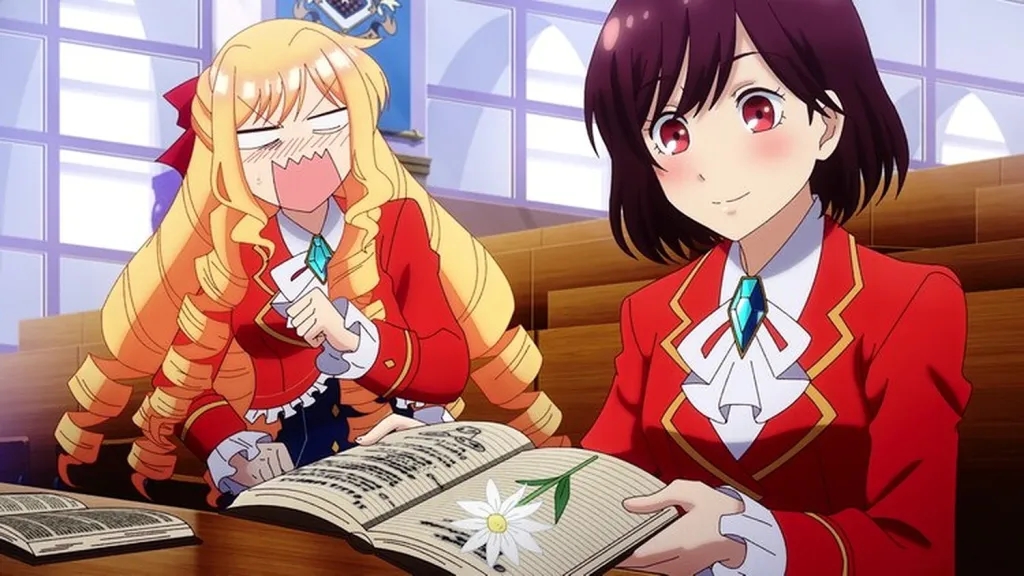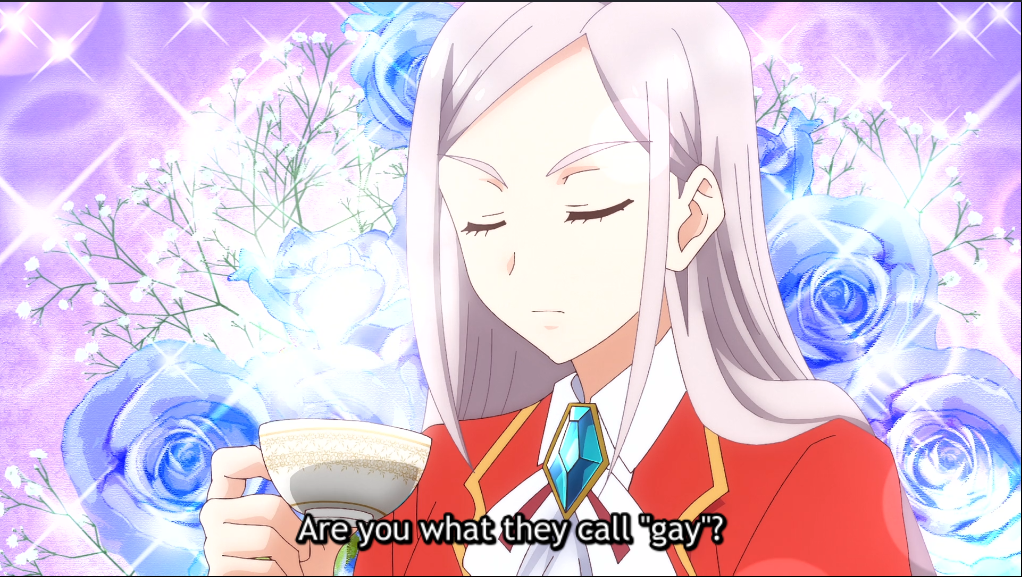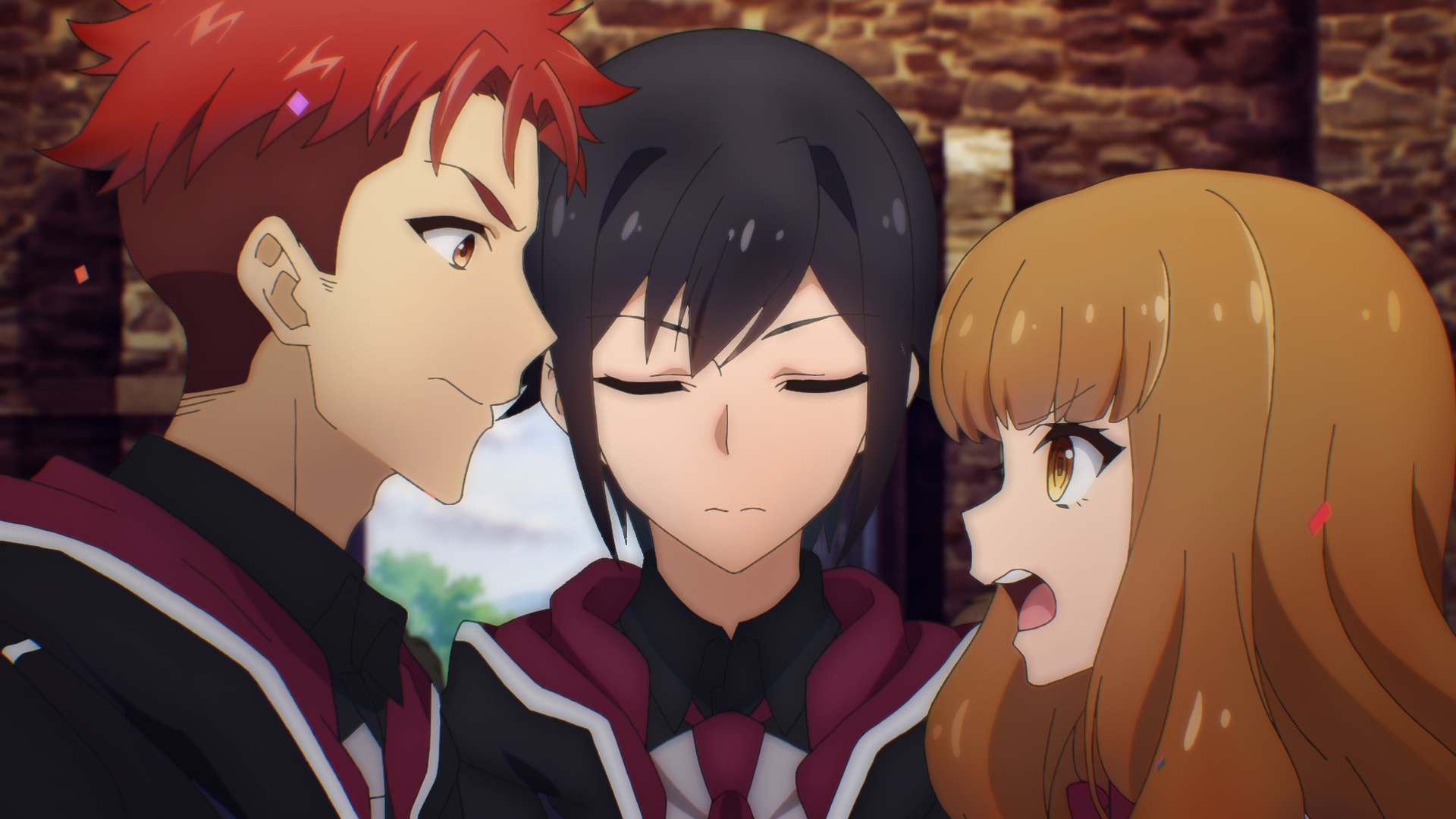At first glance, the I’m In Love With the Villainess anime isn’t a huge game-changer. It takes the oversaturated “villainess” trope and applies a yuri twist to it, which is, like…neat, but not unheard of in anime. My Next...

At first glance, the I’m In Love With the Villainess anime isn’t a huge game-changer. It takes the oversaturated “villainess” trope and applies a yuri twist to it, which is, like…neat, but not unheard of in anime. My Next Life as a Villainess: All Routes Lead to Doom! and The Magical Revolution of the Reincarnated Princess and the Genius Young Lady both already have yuri elements in them (and is the central romance in the latter’s case).
But I’m In Love With the Villainess has a strong cult following, not just in Japan but also internationally. The reason for this is simple: this series is incredibly woke and incredibly big-brained.
I say “woke” unironically and without exaggeration. There are parts of the novel where the narrative explicitly addresses real-life issues that affect members of the LGBTQ+ community, with particular emphasis on lesbian and transgender people. Anime viewers get their first hint of this in episode 3, where the characters frankly discuss the definition of homosexuality and the protagonist gently pushes back on the other characters’ homophobic biases.

This is only the beginning of the series’ deep dives into social issues. The overarching theme of the story is “revolution” and the writing does not tiptoe around the politics involved. Importantly, the plot never sacrifices its entertainment value by addressing real-life problems. There are shades of grey to the characters, and it never feels like the author is simply using the story as a dressing for political essays. At the same time, it is pretty easy to sum up the author’s views as…well…woke.
For example, take this excerpt:
I wasn’t opposed to the traditional male-female gender binary system. In fact, I believed it was a well established model that explained the undeniable biological differences between people. But I also believed society had advanced to a stage where the two traditional classifications were no longer sufficient.
Contrary to what the gender binary dictated, I believed everyone had some degree of both masculinity and femininity within them. I also knew that there were people who identified as a gender that wasn’t male or female, or who couldn’t connect to any gender at all. For such people, the enforcement of the gender binary was simply cruel.
From Volume 4, Chapter 12: “The Ball”The above is a clear and simple breakdown of the positives and negatives of the gender binary. In context, the protagonist is simply explaining why she identifies as female despite not being that keen on skirts. She also explains the concept of gender dysphoria, which becomes a plot point later in the volume.
Of course, this author’s perspective is just one way of thinking about it. There are lots of other valid ways to approach identity issues. You don’t have to literally write the words “gender dysphoria” to tell a story that resonates on the topic. But it is still pretty fascinating to see an author use such direct language in a work of entertainment. That kind of language is (sadly) heavily politicised, so it’s understandable for many artists and writers to shy away from using it even when they sympathise with the fundamental idea behind it.
At this point, I should mention that as an Australian fan of Japanese media, I don’t necessarily approach these works expecting them to reflect my exact worldview. In fact, the opposite is true—these works are an outlet for exposing myself to different societal and cultural viewpoints. But, obviously, it’s not as if LGBTQ+ issues don’t exist in Japan, so it’s enlightening to see these things expounded upon from a Japanese point of view. I’m not alone in thinking this way. This is one of the big reasons why I’m In Love With the Villainess has so many diehard fans outside Japan as well.

The other reason why I think that I’m In Love With the Villainess is neat is because its boldness and audacity does not merely extend to social justice. I am going to allude to some major spoilers in the next paragraph, so be warned.
SPOILERS: In general, the series has a tendency to just keep evolving and escalating. At times, the tone shift is gradual, and other times it hits you almost out of nowhere with game-changing twists. By the end of the series, I feel like the story has covered every possibility of the yuri genre: a sapphic romance about girls in school, slice-of-life storytelling about two adult women in a committed relationship, a world-changing adventure, and even high-concept sci-fi elements framed around the obsessive relationship between two female characters (think Puella Magi Madoka Magica or Qualia the Purple). END SPOILERS.
When I think about this series, it’s honestly the big-brained aspect that sticks out to me the most. It’s one of those times when I can see the benefit of the web novel format in the hands of a talented author, because it gives the story a sort of loose and experimental structure. The story continuously builds on itself while exhibiting the entire range of the author’s influences. It actually reminds me of Mushoku Tensei in that respect.
So, yeah, it is pretty easy to see why I’m In Love With the Villainess became such a cult hit. The LGBTQ+ elements are a good hook for newcomers, but you’ll want to stick around because the story develops in ways that always feel fresh and exciting. I think the anime will probably end after the first chapter of volume 2, judging by the pacing, so it obviously won’t cover all the twists and turns of this five-volume series. But it’s a great introduction to the series nonetheless. There are lots of surprises and thoughtful moments even within the first volume. After all, Rae has already revealed herself in the anime to be a more nuanced and introspective character than her fangirl stalker personality suggests.


The story is only going to get more interesting from here, so buckle yourselves in for a ride!












